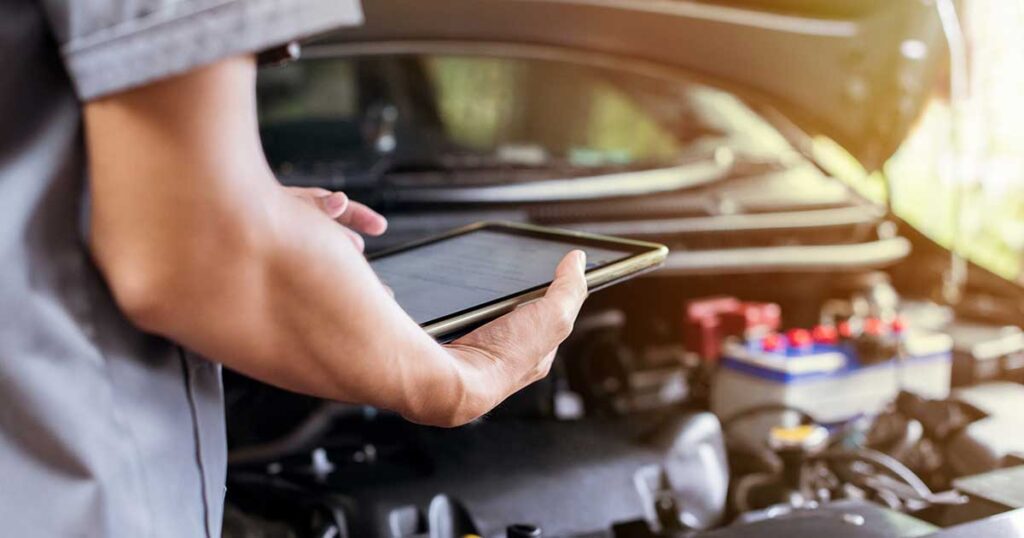Digital vehicle inspections (DVIs) are central to providing a 21st-century experience to your customers. Just as streaming revolutionized the entertainment industry, digital communication has drastically transformed all consumer service industries. Within auto repair, DVIs enable shops to upgrade their business to the next level. While shifting from paper to digital records can seem daunting in the short term, the long-term benefits make the effort worth exploring.
Below are five reasons to switch to DVIs in your shop:
1. Build Trust with Customers
In 2020, AAA conducted an auto repair consumer survey, revealing two-thirds of drivers don’t trust independent auto repair shops. Additionally, 63% said they’d had negative experiences at auto repair shops. A well-implemented digital inspection process can break the stereotype many drivers have about auto repair mechanics. “Seeing is believing:” when a technician attaches an image of a dirty air filter or a video of a busted ball joint, the customer has little reason to doubt whether or not it’s a necessary repair. Also, given the inspection and estimate can be sent directly to the customer, the customer plays a more active role in approving and declining work.
2. Provide Convenience for Busy Customers
Life doesn’t stop when vehicles need repairs. Because DVIs and estimates can be shared through a text message or email, customers don’t have to remain at the shop. They can drop off their vehicle and keys, go about their day while keeping tabs on their vehicle so they can approve or decline work whenever it is convenient for them.
3. Meet the Standard for Digital Solutions
Now more than ever, auto repair shops are beginning to use DVIs in conjunction with other touchless services like text-to-pay and two-way texting. DVIs play a key role in providing a contactless experience. Even when customers become more comfortable with coming into the shop, they still expect to leave when they want and receive updates on the vehicle’s progress while on-the-go.
4. Sell More Work
Auto repair shops that train their technicians to use DVIs sell more work and see higher AROs. DVIs not only allow technicians to complete a more thorough assessment, but also help prioritize the repair work needed in a transparent, easy-to-understand way. For example, Tekmetric’s digital vehicle inspections utilize a “green, yellow, red” color system to prioritize jobs. This transparent communication contributes to both trust and loyalty among the customer — and more work as a result.
5. Increase Efficiency in Your Shop
When every job begins with a DVI, the entire repair process becomes more efficient. Technicians know exactly what to look for and how to clearly relay that information to service advisors. Service advisors have a standardized report to build estimates. Customers have accessible records and more control over the work to be done. As an added bonus, with a shop management system like Tekmetric, shop owners can see these efficiencies in real-time, including how they translate to gross profit and other key performance indicators.
Consider Utilizing DVIs Through Your Shop Management System
While there are many stand-alone DVI tools available, it’s also common to see DVIs that either integrate with shop management software, or shop management systems that include a built-in DVI tool. So, how do you determine what is best for your shop?
If you already use, or are planning to use, a shop management system — it is best to go with a DVI solution that integrates with (or is a part of) your system. This saves you money, time and effort by:
- Providing an all-in-one solution, preventing additional spending on separate systems and increased IT costs.
- Simplifying the estimate-building process, allowing technicians to easily share the completed inspection with service advisors to build a repair order.
- Increasing awareness of both approved and declined jobs, enabling the shop to keep customers updated on ongoing and upcoming repairs.
Other Considerations
A shop using DVIs effectively puts customers at ease. A DVI operates on a piece of software, making it more accessible and easily shared across the shop and with the customer. The technology opens a world of transparency, allowing technicians to attach photos and videos to show customers detailed evidence of the repairs their vehicle needs. Additionally, the customer doesn’t need to be in the shop — the completed DVI can be shared via text or email for the customer to view and approve each individual repair at their convenience. When done right, DVIs are the ultimate way to build trust and loyalty that can lead to increased AROs and gross profit.

